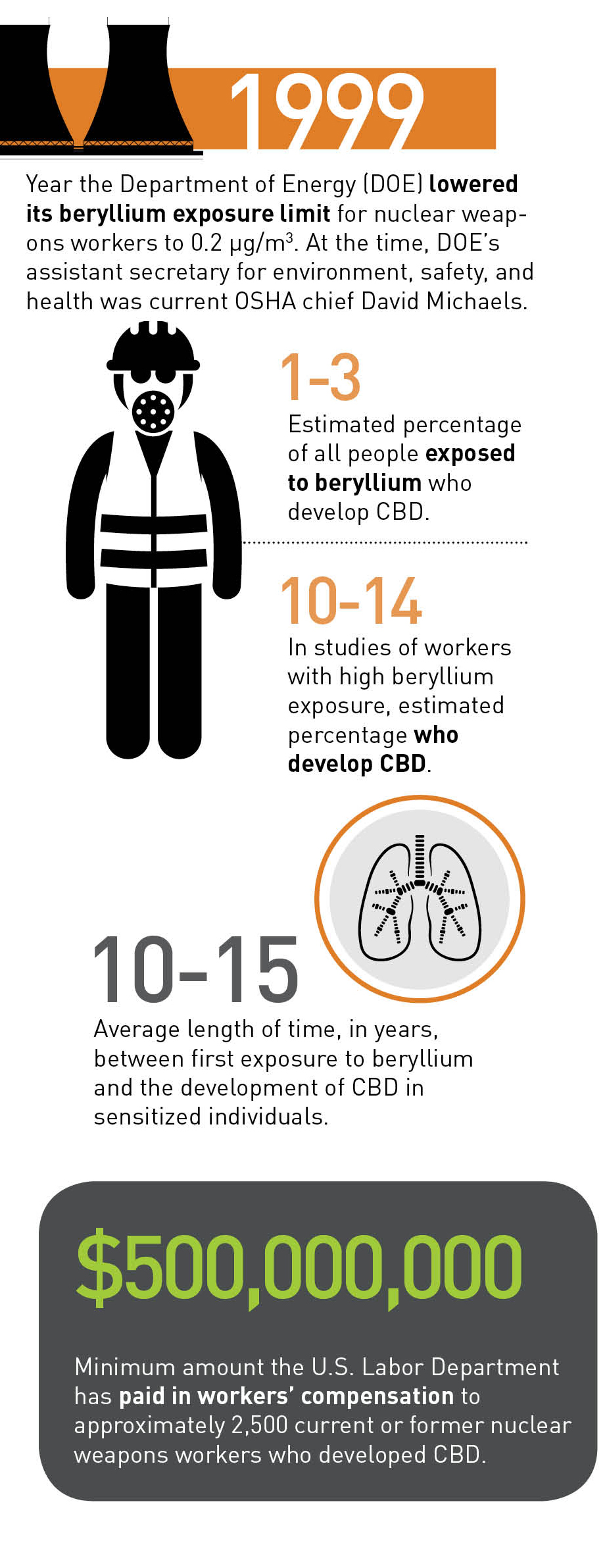DEPARTMENTS
BY THE NUMBERS
Chronic Beryllium Disease
In August, OSHA announced a proposed rule that would reduce the PEL for beryllium exposure from 2.0 µg/m3 to 0.2 µg/m3 (eight-hour time-weighted average). Beryllium is used in many applications in the defense, aerospace, and nuclear energy industries. In humans, skin exposure to or inhalation of beryllium dust can trigger the body’s immune response to beryllium. These “sensitized” individuals are at risk for developing chronic beryllium disease (CBD) from exposure to airborne beryllium even at levels below the current 2.0 µg/m3 PEL. Symptoms of CBD can include shortness of breath, fatigue, weight loss, fever, and night sweats. Inhalation of beryllium dust, mist, or fumes can also lead to lung cancer.
CBD has long been associated with nuclear weapons workers. Today, workers with potential exposure to beryllium include foundry workers, machinists, metal fabricators, welders, and abrasive blasters. Information about CBD from various sources appears below.
SOURCES:
C&EN: “More Protective Worker Exposure Limit For Beryllium Proposed”
Energy.gov: “About Beryllium”
OSHA Fact Sheet: “Health Effects of Exposure to Beryllium” (PDF)
OSHA News Release: “OSHA proposal would lower beryllium levels, increase workplace protections”

From NIOSH Alert: Preventing Sensitization and Disease from Beryllium Exposure:
“Chronic beryllium disease has been observed among workers with a variety of exposure histories—long and short duration, high and low air concentrations of beryllium, and any form of beryllium. In many cases, chronic beryllium disease develops while workers are still being exposed to beryllium, occasionally within months of first exposure. In other instances, the disease may not be diagnosed until years after a person has stopped working in the beryllium industry.”
thesynergist | TOC | NEWSWATCH | DEPARTMENTS | COMMUNITY
thesynergist | TOC | NEWSWATCH | DEPARTMENTS | COMMUNITY

